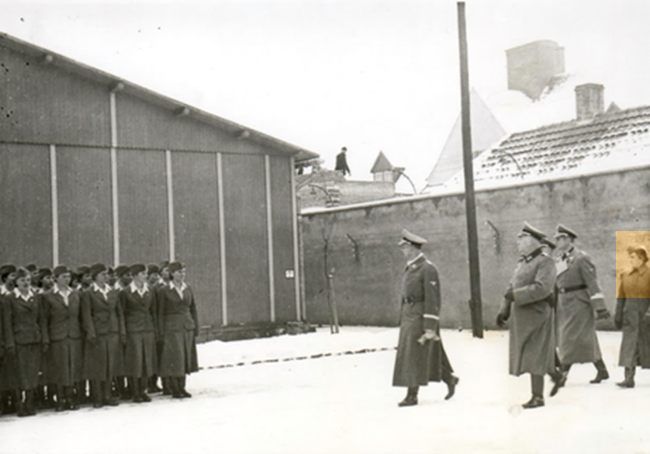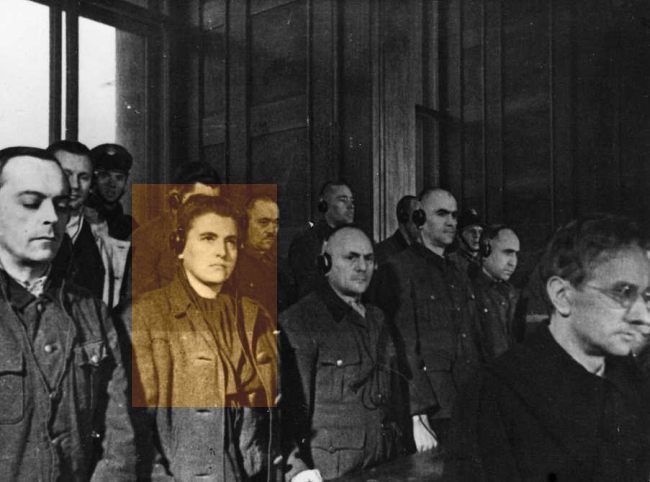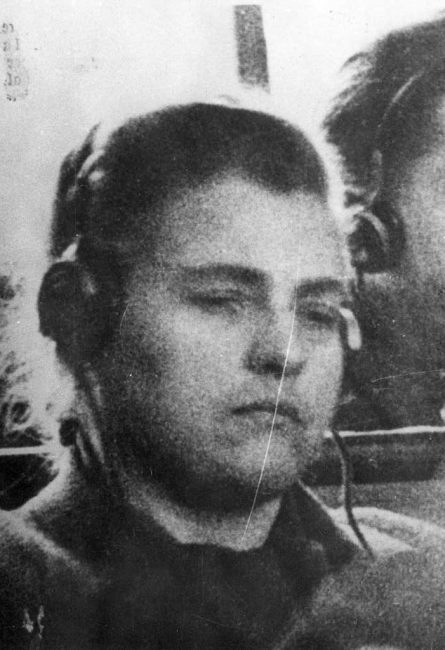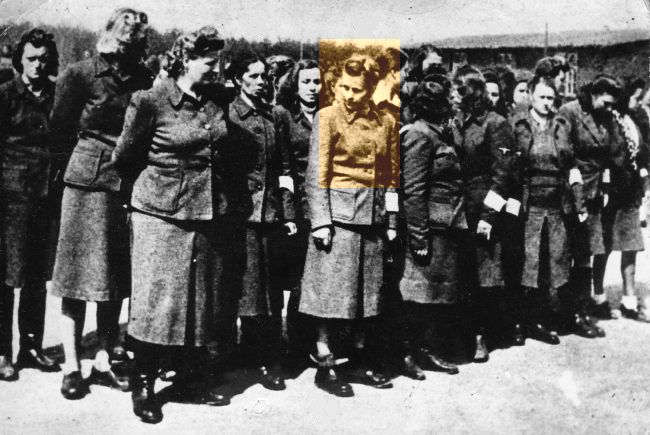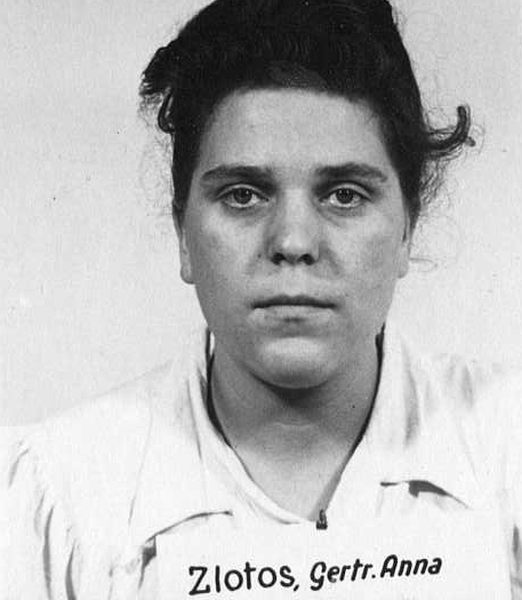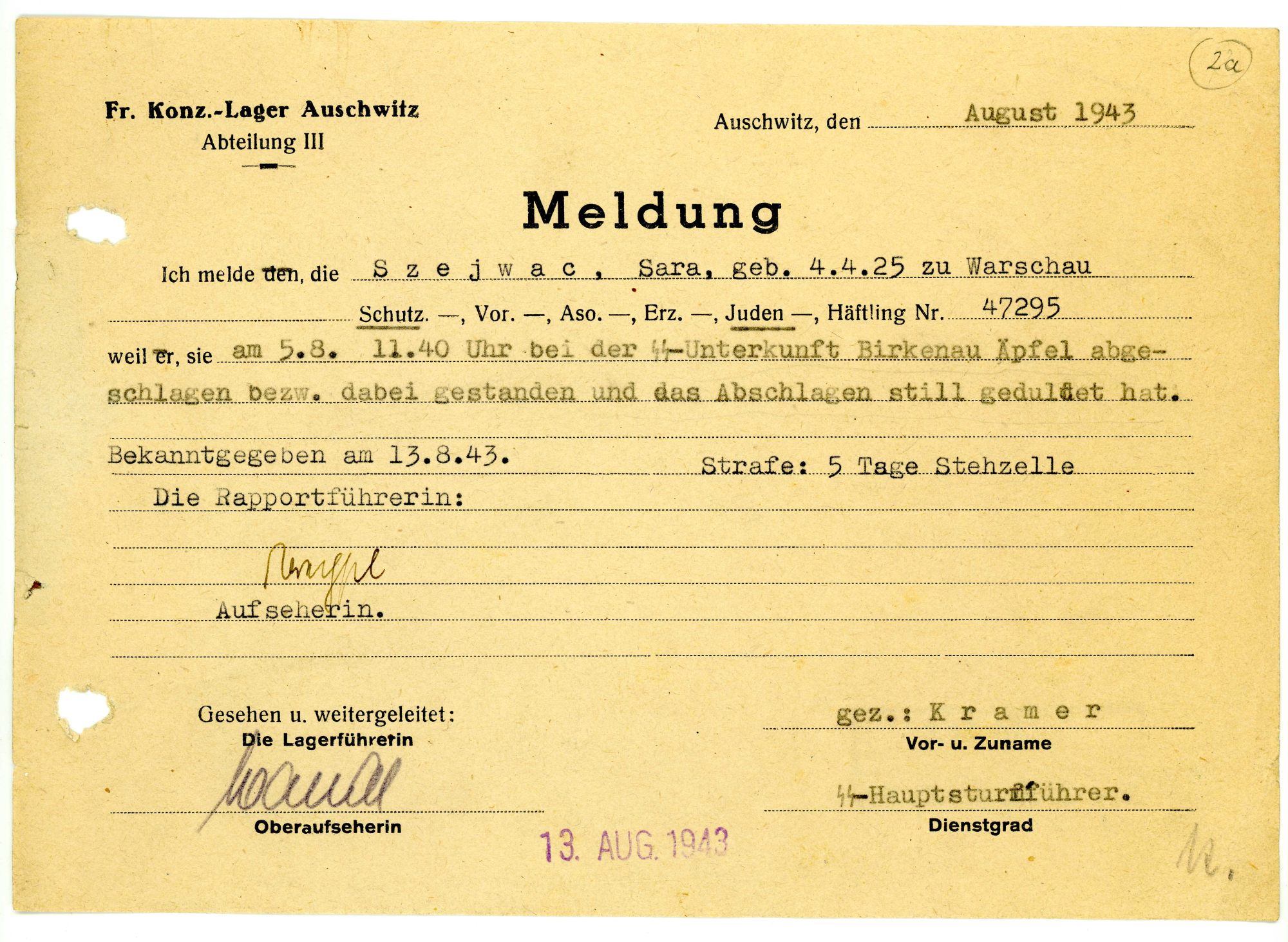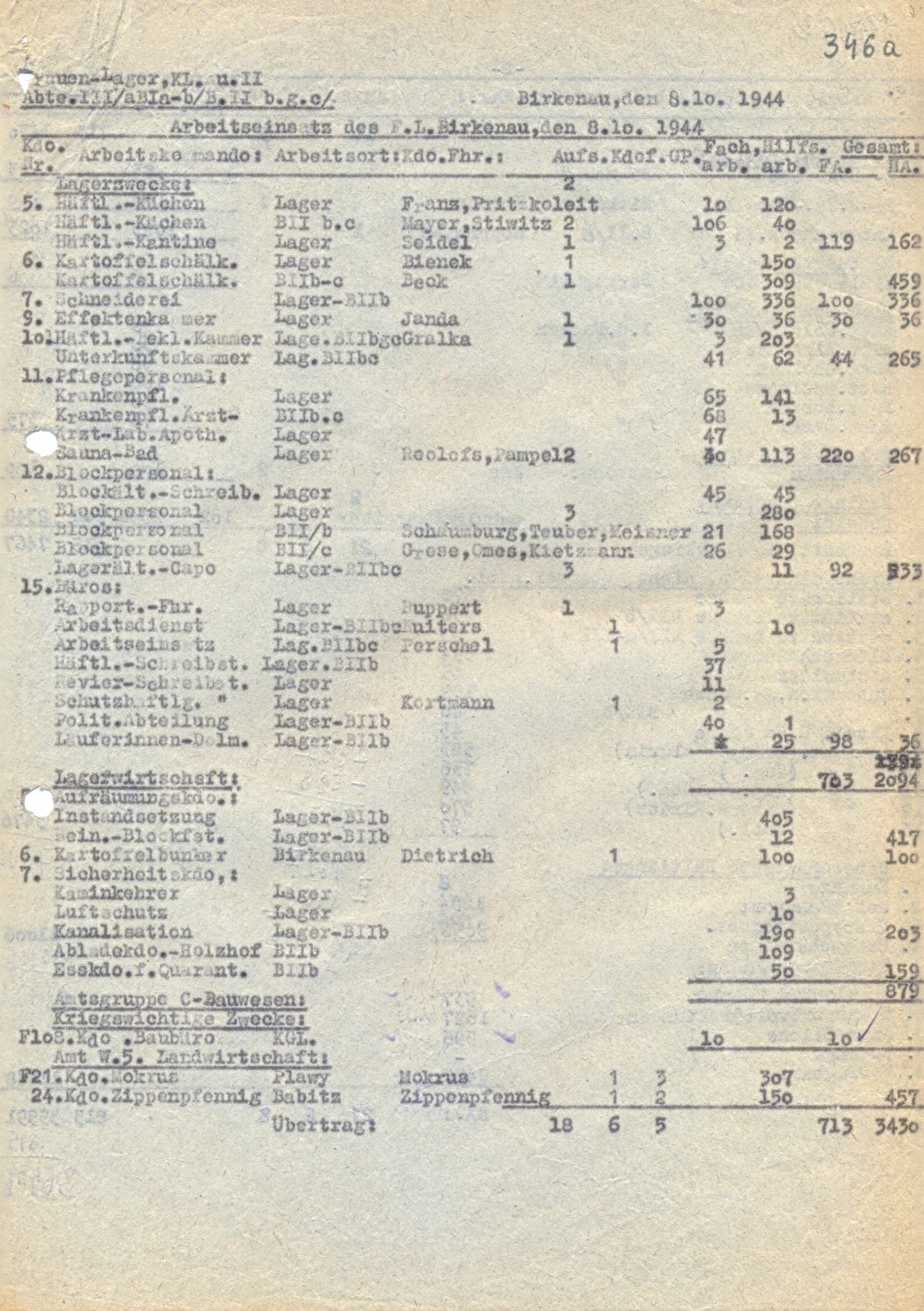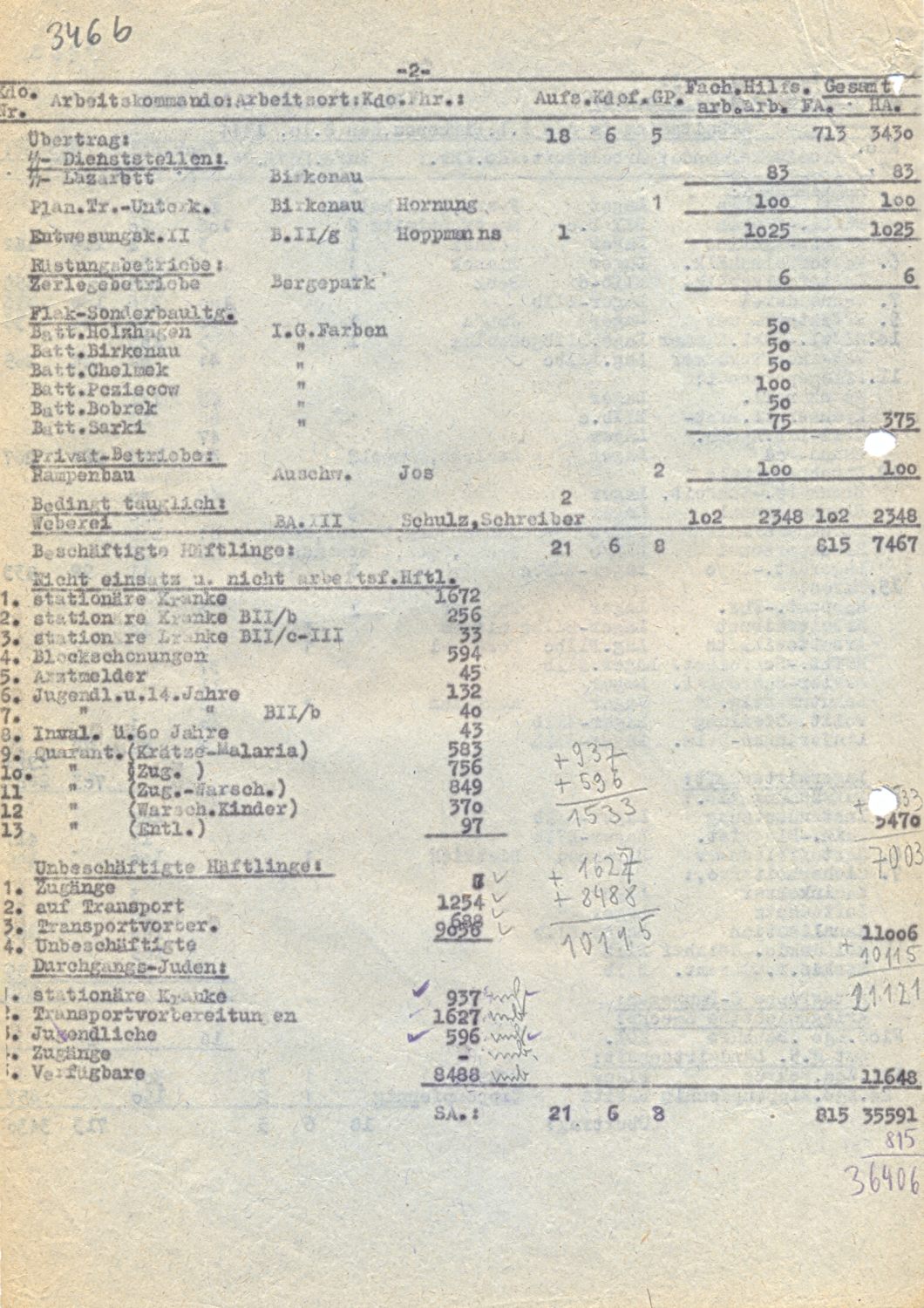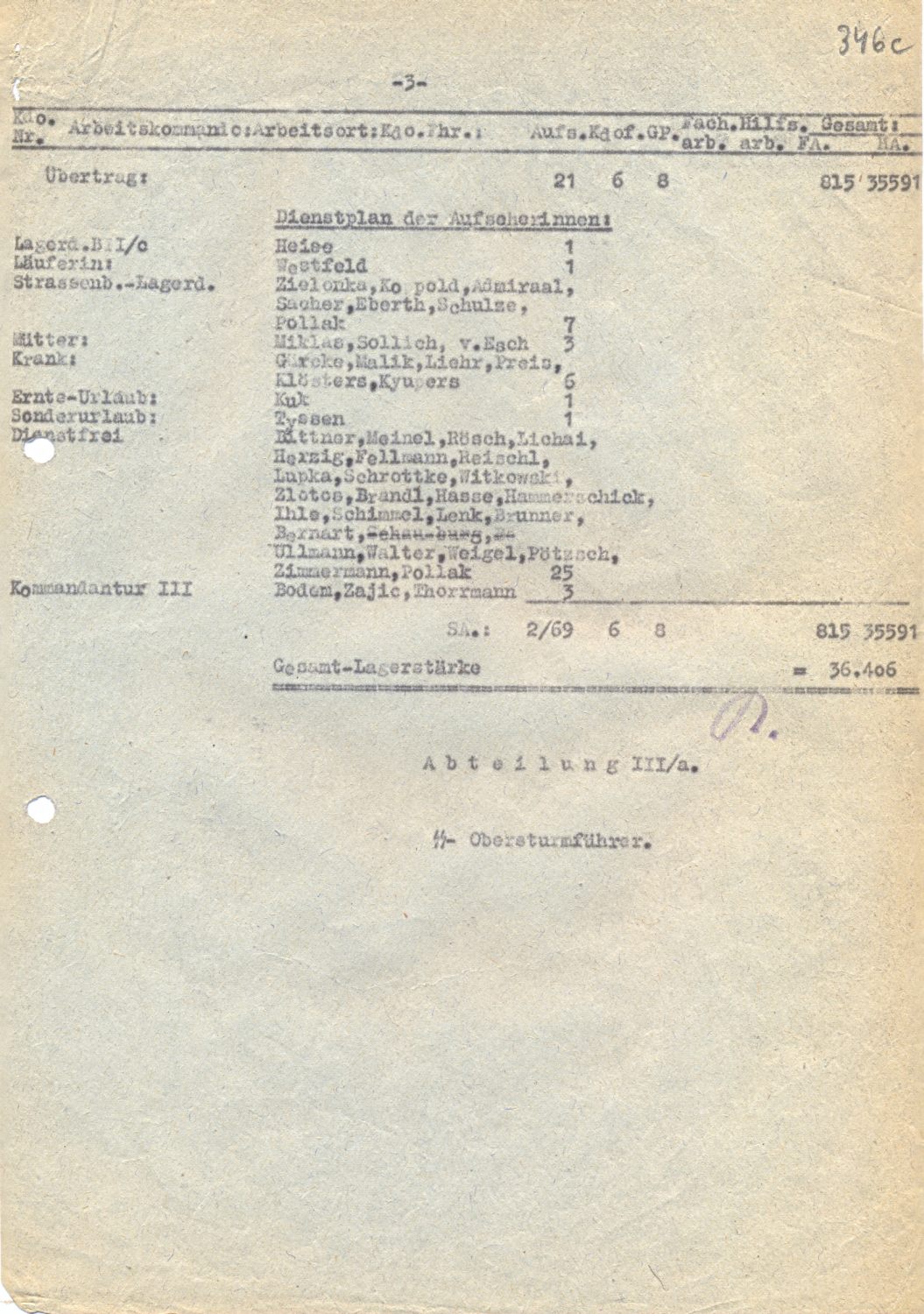Just as in the case of male concentration camps, the ones for women were directly subordinate to a Commandant, who could only be a male member of the SS. The chain of command of female SS guards was like that of male SS guards. The only difference was that in the case of women, the principle of double subordination was implemented, as there was no female counterpart SS institution to deal with the supervision of female staff. Therefore, Commandants of concentration camps determined the tasks and skillset of female staff. Furthermore, female SS guards reported to a senior female SS guard (Oberaufseherin). Although she was the head of the female section of the concentration camp, she was not entitled to command male SS members. The Oberaufseherin was in charge of the female section of the camp and advised the head of the male section of the camp (Schutzhaftlagerführer) regarding all issues where women were involved. With no clear division of responsibilities among them, conflicts between supervisors of male and female sections of Auschwitz concentration camp occurred relatively often, as their scopes of activities overlapped in practice. Johanna Langefeld, acting Oberaufseherin in FKL Ravensbrück and later also in Auschwitz concentration camp tried to expand her authority regarding the female camp, thus causing ongoing conflicts with male staff members.

